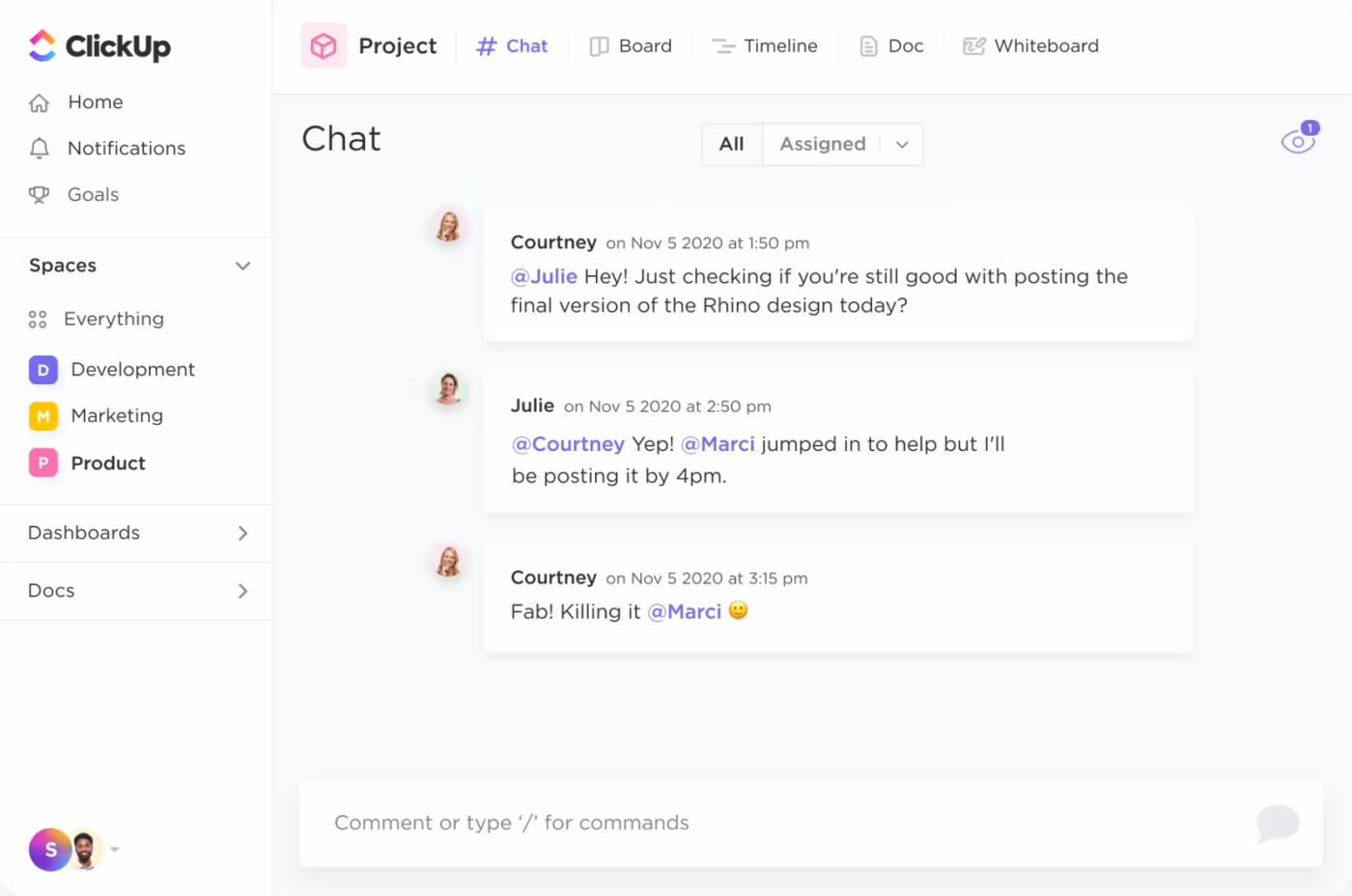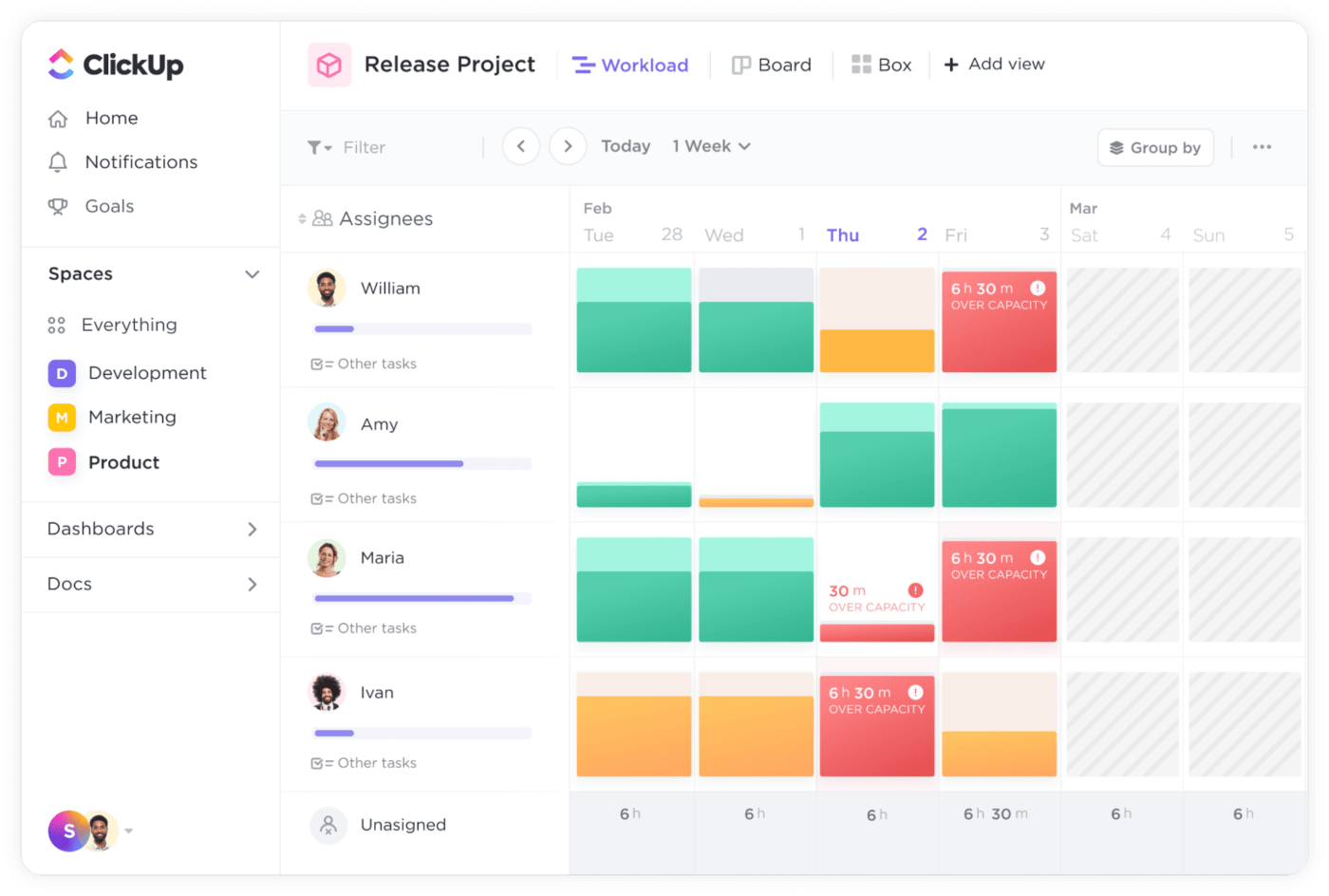في أعقاب التحول العالمي نحو العمل عن بُعد، يتم اختبار ديناميكيات الفريق بشكل لم يسبق له مثيل. فأعضاء الفريق منتشرون جغرافياً عبر مناطق زمنية مختلفة. وهم يعملون من المنزل في بيئات ذات مرافق ومشتتات لا يمكن للمؤسسات التحكم فيها.
يمكن أن يكون هذا تحديًا كبيرًا، خاصة في فرق سكروم المرنة. ويعتمد إطار عمل سكرم على فرق ذاتية الإدارة تتعاون وتبتكر وتتكيف مع التغيير. بدون الديناميكيات المناسبة، فإن الفرق البعيدة محكوم عليها بالفشل.
في منشور المدونة هذا، نتعرف على كيفية تجنب ذلك.
ما هو فريق سكروم؟
فريق سكروم هو مجموعة متعددة الوظائف من الأفراد الذين يعملون معًا لتقديم منتجات برمجية على دفعات صغيرة. يشبه فريق سكروم فريق سكروم الفريق الرياضي، حيث يكون لكل عضو من أعضاء الفريق دور محدد ويعملون جميعًا لتحقيق هدف مشترك.
فريق سكروم الرشيق النموذجي هو
متعدد الوظائف: يشمل أخصائيي واجهة المستخدم وتجربة المستخدم وعمليات التطوير والجودة بالإضافة إلى مالك المنتج وسكروم الرئيسي وفريق التطوير.
صغير: صغير: يتكون فريق سكروم النموذجي من أقل من عشرة أشخاص. تم تصميم الفرق لتكون صغيرة بما يكفي لتكون سهلة الإدارة ولكنها كبيرة بما يكفي لإكمال عمل كبير في كل سباق.
ومع ذلك، في بعض الأحيان، عندما يكون المشروع كبيرًا، هناك أيضًا إمكانية وجود فرق سكروم متعددة تعمل معًا. أو فريق سكروم واحد مقسم إلى فرق فرعية ذات مهارات متخصصة.
التنظيم الذاتي: يتمتع أعضاء فريق سكروم بالاستقلالية والإدارة الذاتية. يمكنهم النقاش والاختلاف وحل النزاعات فيما بينهم.
شفاف: يتسم بالشفافية: تستخدم فرق سكروم البيانات التاريخية لوضع الخطط. يتشاركون الملاحظات بصراحة ويعملون معًا لتحقيق التقدم.
في موقع مشترك: تقليديًا، كانت فرق سكروم تعمل في نفس الموقع. ومع انتشار العمل عن بُعد، لم يعد هذا هو الحال، على الأقل ليس في العالم الحقيقي. ومع ذلك، لكي تنجح كوحدة، فإنها تحتاج إلى مساحة تعاونية رقمية. سنتطرق إلى ذلك لاحقًا في هذه المدونة.
فهم فرق سكروم
لقد غيرت فلسفة أجايل-سكروم بشكل جذري الطريقة التي يتم بها تطوير البرمجيات. فبدلاً من الطريقة القديمة، عندما كانت مشاريع تطوير البرمجيات تمتد لعدة سنوات، مع الالتزام الدائم بالخطة الأصلية سواء كانت قابلة للتطبيق أم لا، أصبح سكروم يعطي الأولوية لقيمة الأعمال والتركيز على العميل والقدرة على التكيف. إلا أن هذه الرحلة لم تكن سريعة.
تاريخ مختصر لـ Scrum
انبثق مفهوم سكروم من عام 1986 مقالة في مجلة هارفارد بيزنس ريفيو بقلم هيروتاكا تاكيوتشي وإيكوجيرو نوناكا. لقد رسموا أوجه التشابه بين الفعالية وسرعة الحركة والوظائف المتعددة الوظائف الفرق الرشيقة ولعبة الرجبي
مصطلح "سكروم" مستعار من لعبة الرغبي، حيث يشير إلى لعبة عندما يتجمع أعضاء الفريق معًا بشكل وثيق لإعادة تشغيل اللعبة.
وبعد سنوات قليلة، قام كين شوابر وجيف ساذرلاند بتطوير "سكروم" كعملية رسمية لتطوير البرمجيات، وقدماها للجمهور في عام 1995. وقد تطور هذا أيضًا فيما بعد إلى بيان التطوير الرشيق .
في حين أن كين وجيف صمماه في البداية لتطوير البرمجيات، إلا أن جيف ساعد الفرق في مختلف الصناعات والوظائف على تبني فلسفة سكروم منذ ذلك الحين.
هيكل فريق سكروم
لفريق سكروم ثلاثة أدوار حاسمة:
- مالك المنتج: صوت العميل والمشرف على الأعمال المتراكمة
- مسؤول سكروم: الميسّر الذي يضمن فهم الفريق للعمل واحترام قيم سكروم وتذليل العقبات
- فريق التطوير: المجموعة المسؤولة عن كتابة التعليمات البرمجية والاختبار والتصميم وأي شيء آخر ضروري لتطوير الزيادة
سنستكشف كل دور في قسم قادم من هذه المدونة.
أساسيات فريق سكروم
بالإضافة إلى مجموعة من الأشخاص متعددي الوظائف ذاتية التنظيم، هناك العديد من المكونات والممارسات لفرق سكروم. العناصر الأساسية هي
أحداث سكروم: الأحداث التعاونية التي تشارك فيها الفرق الرشيقة، مثل التخطيط للسباق السريع، والفعاليات اليومية اجتماع سكروم واستعراضات استرجاعية، وما إلى ذلك. مصطلحات أجايل سكروم : لغة مشتركة لفريق سكروم، بما في ذلك مصطلحات مثل سباقات السرعة والملاحم والمراحل المتراكمة وما إلى ذلك.
الأدوات: العناصر الرئيسية الثلاثة القطع الأثرية لسكروم أي الأعمال المتراكمة للمنتج، والأعمال المتراكمة في سباق السرعة، وزيادة المنتج.
الأدوات: برنامج مجاني لإدارة المشاريع لممارسة كانبان، وتسجيل قصص المستخدمين، وتتبع التقدم المحرز، وما إلى ذلك.
دور فريق سكروم في تطوير حالات الاستخدام
تتمثل فلسفة سكروم في تطوير البرمجيات في زيادات صغيرة تقدم قيمة للمستخدم. لتقسيم الميزات إلى زيادات منطقية، تحتاج فرق سكروم إلى فهم حالات استخدام العملاء.
لنأخذ مثال تطبيق وسائل التواصل الاجتماعي. إذا كانت إحدى حالات الاستخدام هي أن يقوم العميل بتحميل الصور لمشاركتها، فإن الميزات التي يجب تطويرها في سباق السرعة ستكون حساب المستخدم > تحميل الصور > علامات التصنيف > الوصف > النشر.
من ناحية أخرى، بدون حالة الاستخدام، قد يقوم الفريق بتقسيم ذلك عموديًا. لذا، قد يتضمن العدو السريع ميزات مثل ملف تعريف المستخدم > صورة عرض المستخدم > عنوان URL لملف تعريف المستخدم > حالة المستخدم التي تم التحقق منها > وعاء نصائح المستخدم، إلخ. باستخدام هذه الطريقة، سيحتوي التطبيق على ميزات ملف تعريف المستخدم فقط، مما يجعله غير قابل للاستخدام حتى يتم تشغيل ميزة المشاركة.
هاتان الطريقتان رشيقتان بالطبع، ولكن حالة الاستخدام تجعل الميزات الموجودة في السبرينت قابلة للاستخدام عند إطلاقها.
يقوم مالك المنتج وسكروم الرئيسي وفريق التطوير معًا بتكييف حالات الاستخدام مع المهام.
سيضمن مالك المنتج فهم فريق التطوير لاحتياجات المستخدم وكيفية ترجمتها إلى برنامج وظيفي.
سيساعد سكرم ماسترز في تحديد أولويات قصص المستخدمين وتنظيمها في الأعمال المتراكمة من أجل التخطيط الفعال لسباق السرعة.
سيقوم فريق التطوير بفهم ملاحظات المستخدمين وبناء التحسينات على طول الطريق.
مع حالات الاستخدام، تعمل فرق سكروم على تحسين نتائج تطوير البرمجيات. هذه هي البداية فقط. يقوم أعضاء فريق سكروم بالعديد من الأنشطة اليومية لإنجاح تطوير البرمجيات الرشيقة. فيما يلي بعض من أهمها.
الأدوار في فريق سكروم
فريق سكروم لديه ثلاثة أدوار أساسية: مالك المنتج وسكروم ماستر وفريق التطوير. دعونا نرى ما يفعلونه وكيف يعمل أعضاء فريق سكروم هؤلاء معًا.
1. مالك المنتج
يشبه مالك المنتج المغني الرئيسي للفرقة الموسيقية، حيث يحدد النغمة والاتجاه. فهو حلقة الوصل بين أصحاب المصلحة وفريق التطوير. وتتمثل مسؤولياتهم الرئيسية فيما يلي.
تحديد الرؤية
يحدد مالك المنتج الأهداف والرؤية للمشروع. يقوم بإعداد إطار عمل سكرم (Scrum)، مما يضمن توافق الجميع ومعرفة شكل النجاح. يرسمون خط الرؤية من أهداف العمل إلى الأنشطة الهندسية.
امتلاك وإدارة الأعمال المتراكمة للمنتج المتراكمة
مالك المنتج هو نوع من مالك الأعمال المتراكمة أيضًا. فهو مسؤول عن الأعمال المتراكمة للمنتج وتحديد أولويات العناصر بناءً على الاستراتيجية/الأهداف لكل سباق.
التواصل مع أصحاب المصلحة
مالك المنتج هو نقطة الاتصال الوحيدة لفريق العمل. يتواصلون مع راعي المشروع/العميل ويقدمون تقارير منتظمة.
تقييم الملاحظات
فرق سكرم الجيدة تعطي وتتلقى الملاحظات بصراحة. تقوم فرق العمل ورعاة المشروع/العملاء بذلك أيضًا. ويتمثل دور مالك المنتج في جمع الملاحظات وتقييمها وغربلتها وصياغتها من أجل اتخاذ الإجراءات اللازمة.
2. سيد سكروم
مسؤول سكروم هو مدير الفرقة، وهو الشخص الذي يتأكد من وصول الفرقة إلى الحفلات في الوقت المحدد، وأن لديها كل ما تحتاجه لأداء عملها على أكمل وجه.
إنهم أسياد سكروم وليسوا أسياد الأشخاص. لذا، فإن سيد سكروم هو ميسر الفريق ومدربه، وليس مديرًا. تشمل مسؤوليات مسؤوليات مسؤول سكروم ما يلي:
تيسير مراسم سكروم
مسؤولو سكروم ماسترز مسؤولون عن ضمان اتباع الفريق لجميع ممارسات سكروم. فهم يضمنون أن جلسات التخطيط والوقوف اليومي والمراجعات والمراجعات والمراجعات تتم بسلاسة وتكون مثمرة.
إزالة العوائق
يعالج مسؤول سكروم العوائق على طول رحلة الفريق. يمكن أن يكون هذا أي شيء بدءًا من الصراع بين أعضاء فريق التطوير إلى عدم وجود ميزانية لأداة الأتمتة المطلوبة. إذا كانت هناك مشكلة، اتصل بسيد سكروم.
التدريب والدعم
يحتاج اتباع ممارسات سكروم باستمرار إلى شخص ما لمحاسبة الفرق. ويساعد مسؤولو سكروم الفريق في الحفاظ على تركيز الفريق، ويقدمون الدعم والتوجيه لضمان التحسين المستمر.
3. فريق التطوير
فريق التطوير هو مجموعة من أعضاء فرقتك الموسيقية، كل منهم يعزف على آلته الموسيقية الخاصة ولكن جميعهم يساهمون في الأغنية.
الشيء الحيوي في فريق التطوير في سكروم هو أنهم متعددو الوظائف ولديهم جميع المهارات اللازمة للقيام بالمهمة، من التصميم والتطوير إلى الاختبار والنشر. وتشمل المسؤوليات الجماعية لفريق التطوير ما يلي:
تقديم الزيادة في المنتج
على المستوى الأساسي، يكون فريق التطوير مسؤولاً عن إنشاء زيادات وظيفية وقيمة للمنتج في كل سباق سريع. فهم يأخذون قصة المستخدم من الفكرة إلى الميزة من خلال التخطيط والتصميم والتطوير والاختبار والنشر.
التنظيم الذاتي
أعضاء فريق سكروم مستقلون ولديهم شعور عالٍ بالملكية. عندما نقول "التنظيم الذاتي"، فإننا نعني أن فريق التطوير يقرر بشكل جماعي كيفية إنجاز عملهم على أفضل وجه، ومن يقوم بماذا، ومن يساعد من، وكيف يتم تنفيذ المهام.
التحسين المستمر
يتواجد فريق التطوير في أعشاب المنتج. لذا، فهم يمتلكون القدرة على تحديد الثغرات وإجراء التحسين المستمر بالتفاصيل الدقيقة. بعد كل سبرنت، يقوم فريق التطوير بالتفكير في أن يصبح أكثر فعالية وتعديل سلوكه وفقًا لذلك.
في حين أن سكرم هو أحد أكثر أطر العمل تحديدًا، إلا أن إدارة الفريق ليست بالأمر السهل. فهي تجلب معها التحديات التي نناقشها بعد ذلك.
التحديات الشائعة في إدارة فريق سكروم ## التحديات الشائعة في إدارة فريق سكروم
يمكن أن تكون التحديات في إدارة فريق سكروم تكنولوجية أو إدارية أو ثقافية أو عملية المنحى. دعونا نلقي نظرة على بعض التحديات الشائعة.
عدم وضوح الأدوار: عندما يكون الفريق مرنًا ومتعدد الوظائف، قد تتداخل المسؤوليات. على سبيل المثال، قد يؤدي مصمم تجربة المستخدم ومطور الواجهة الأمامية مهام متداخلة. قد يكون هناك ارتباك وتضارب لا داعي له بدون رؤية واضحة للخط الفاصل بين الاثنين.
الحل: يمكن معالجة هذا التحدي من خلال تحديد واضح للأدوار والتواصل وإدارة المهام
غياب منظور الأعمال: يمنح مالك المنتج فريق التطوير منظور الأعمال لفريق التطوير. ومع ذلك، يمكن للأعمال التجارية في بعض الأحيان أن تبقي مالكي المنتجات في الظلام، مما يؤدي إلى حجب فرق تطوير البرمجيات.
الحل: يحتاج مالك المنتج إلى معالجة هذا الأمر بالشعور بالملكية. يمكن أن تكون أدوات مثل نماذج الاستطلاع أو محادثات الاكتشاف مفيدة.
تخطيط البصمة: يتضمن التخطيط الجيد للسباق السريع التنبؤ وتقدير الجهد. ومع ذلك، تعاني فرق سكروم من الإفراط في الالتزام أو التقليل من تقدير المهام، مما يؤدي إلى عمل غير مكتمل أو الإرهاق.
الحل: _تتطلب معالجة هذا التحدي بيانات دقيقة وعالية الجودة
العودة إلى الممارسات القديمة: عندما يتبنّى فريق تطوير البرمجيات التقليدية فريق تطوير البرمجيات التقليدي Scrum، يكونون دائمًا عرضة لخطر العودة إلى الممارسات القديمة - أو أداء الأحداث الرشيقة بشكل سطحي.
الحل: للتغلب على هذا التحدي، يجب على الفرق أن تستثمر في إدارة التغيير والتدريب. فهو ليس تحول لمرة واحدة بل جهد تعليمي مستمر
التواصل غير الفعال: تزدهر فرق سكروم بالتواصل. فهم بحاجة إلى التحدث مع بعضهم البعض في الوقت الفعلي وفي السياق.
الحل: _منصة تواصل/تعاون جيدة تتيح ذلك
الأولويات المتغيرة باستمرار: القدرة على التكيف هي السمة الأساسية لفريق سكروم. ومع ذلك، فإن الأولويات المتغيرة باستمرار يمكن أن تكون محبطة. ويتطلب التكيف مع هذه التغييرات مع الحفاظ على الإنتاجية وعدم المساس بنطاق المشروع أو المواعيد النهائية للمشروع ديناميكية فريق مرنة ومرنة للغاية.
الحل: يمكنك تعديل التغييرات مع فرق العمل. ولكن إذا كنت تعمل في شركة ناشئة في مراحلها الأولى، فستكون في مرحلة التجريب، والتغييرات حتمية. يمكنك مواجهة هذا التحدي من خلال التعاون الوثيق._
كيف تدير فرق سكروم بنجاح
يحتاج فريق سكروم الناجح إلى أدوات وعمليات للمساعدة في إدارة المشاريع الرشيقة. برنامج إدارة المشاريع الرشيقة من ClickUp مصمم لهذا الغرض تحديدًا. دعنا نرى كيف يمكنك استخدام ClickUp لمعالجة كل التحديات التي تمت مناقشتها أعلاه.
وضوح الدور مع إدارة المهام
لتكون رشيقة، تحتاج فرق سكروم إلى وضوح في أدوارها. يمكن أن تساعد أداة إدارة المهام الجيدة بشكل كبير.
استخدام مهام النقر فوق المهام وإنشاء لوحة سكروم لإدارة سباق السرعة.
- حدد بوضوح كل ما يجب أن يقوم به الفريق - قسّم الميزات/قصص المستخدمين إلى مهام صغيرة يمكن إدارتها
- تعيين المستخدمين وتحديد الأولويات
- قم بإنشاء مهام فرعية، إذا لزم الأمر، للأنشطة الأصغر التي يتعين على الأفراد إكمالها
- استخدم قوائم المراجعة لمعايير القبول
- الاستفادة من ميزة التعليقات لمناقشة المشاكل/المخاوف (عرض ClickUp Chat هو متجر شامل رائع لجميع المحادثات!)
- تحويل الردود إلى عناصر إجراءات والتحقق منها
- استخدم الحالات المخصصة لتتبع وتمييزسير عمل سكروم المراحل

عرض الدردشة ClickUp للتواصل مع أعضاء الفريق عبر قنوات متعددة
منظور الأعمال مع نماذج ClickUp
يتمحور دور مالك المنتج حول إدارة أصحاب المصلحة في العمل بقدر ما يتمحور حول الفريق الرشيق. وهذا يعني أن مالكي المنتجات يحتاجون إلى الأدوات اللازمة للتواصل بوضوح مع راعي المشروع/العميل. نماذج ClickUp تبسّط عملية جمع المعلومات من خلال طرح أسئلة محددة على أصحاب المصلحة المشغولين في العمل. فهو يحدد السياق لأي محادثات مستقبلية قد تكون مطلوبة. ClickUp Whiteboards تساعدك على إجراء جلسات العصف الذهني والاكتشاف الحر أثناء التقاط النقاط البارزة بشكل متكرر.

حوِّل أفكار فريقك إلى إجراءات منسقة مع ClickUp-كل شيء في لوحة بيضاء واحدة
تخطيط مبسط لسباق السرعة مع بيانات عالية الجودة
صُممت أداة إدارة المشاريع في ClickUp للاستفادة من الحجم الهائل من البيانات التي يمكن أن يولدها أي سباق سريع.
تعلم المزيد عن موظفيك: أضف تقديرات الوقت وتتبع الوقت المستغرق لكل مهمة. استخدم طريقة عرض عبء العمل لمعرفة مدى توفر وإنتاجية كل عضو من أعضاء فريق التطوير حتى تتمكن من تخصيص الموارد وفقًا لذلك.
إدارة الجداول الزمنية: استخدم طريقة عرض مخطط جانت لتصور مشروعك بمرور الوقت. لاحظ التبعيات وضع الخطط المناسبة. قم بسحب وإسقاط المهام على المخطط الزمني لضبط تواريخ الاستحقاق.
استخدام البيانات: استخدم ClickUp Dashboards لتجميع أنواع مختلفة من البيانات التي تلتقطها، مثل المهام المنجزة حسب الأسبوع، والأولويات، وحالة المشروع، وما إلى ذلك.

نقر فوق طريقة عرض عبء العمل لإدارة عبء العمل
التمسك بـ Scrum مع الموارد المناسبة
يحتاج منع فرقك من الانحراف عن مسار سكروم إلى جهد. تقدم ClickUp بعض أدوات إدارة التغيير لتمكين ذلك.
توثيق أفضل الممارسات مع مستندات ClickUp . اكتب ميثاق المشروع وقوائم المراجعة وما إلى ذلك وشاركها مع الفريق بأكمله لسهولة الوصول إليها.
استخدم أهداف النقر لتوجيه الفرق نحو ممارسة سكروم بشكل أكثر شمولية. قم بإعداد أهداف متعلقة بـ Scrum مثل إجراء عمليات الوقوف المنتظمة أو كتابة قصص المستخدمين التفصيلية.
أتمتة العمليات القياسية باستخدام أتمتة ClickUp . قم بإعداد تدفقات عمل بسيطة في حالة حدوث ذلك لتغيير الحالة عند اكتمال خطوة ما أو إخطار مدير سكروم عند تأخر مهمة ما.

إنشاء عمليات أتمتة مخصصة لتوفير الوقت وزيادة الإنتاجية
إذا كنت جديدًا في إدارة فريق سكروم/فريق العمل الرشيق، فاستخدم أيًا من قوالب سكرم المتاحة على المنصة. خاصةً قالب إدارة سكرم الرشيقة ClickUp الذي يدعم إدارة المشاريع الرشيقة الشاملة.
من الأفضل حل تحديات التواصل غير الفعال وتغيير الأولويات من خلال تحسين التواصل، وهو ما نناقشه بعد ذلك.
التواصل الفعال والتعاون في فرق سكروم ## التواصل الفعال والتعاون في فرق سكروم
الفريق الذي لا يتحدث مع بعضه البعض لا يمكن أن يكون ناجحًا. تحتاج الفرق البعيدة إلى كل ما يمكنها الحصول عليه للتعاون بفعالية. تم تصميم ميزات التعاون في ClickUp مع وضع ذلك في الاعتبار.
اكتب وشارك مع ClickUp
إذا كان فريقك يعمل بشكل غير متزامن، فهم بحاجة إلى طرق للتواصل كتابيًا. قد تكون رسائل البريد الإلكتروني مملة لهذا الغرض. جرب ClickUp Docs لكتابة العمليات والمعايير والأحداث وما إلى ذلك. يمكنك أيضًا كتابة محاضر اجتماعاتك ومشاركتها مع كل أصحاب المصلحة لتحقيق الشفافية.
ما هو الأكثر روعة؟ استخدم انقر فوق الذكاء الاصطناعي لتدقيق كتاباتك وتلخيصها. لا داعي للقلق بعد الآن بشأن "عدم كونك كاتبًا"!

لخص ملاحظات اجتماعك باستخدام ClickUp AI
فكروا معًا
تقضي فرق سكروم الكثير من الوقت في المناقشة والعصف الذهني والتخطيط لعملها. وهذا يحتاج إلى مساحة عمل تعاونية. انقر فوق الخرائط الذهنية تسمح لك بتخطيط سير العمل ورسم الروابط وإدارة المهام من هناك!
إذا كنت تفضل توثيق الأشياء، فقم بتحرير مستندات ClickUp Docs كفريق في الوقت الفعلي. اطلع على من هو متصل بالإنترنت مع اكتشاف التعاون في ClickUp Collaboration واجعلهم ينضمون إليك في المستند على الفور.
ابق على اطلاع
استخدم أدوات سكرم مثل لوحات Kanban لتتبع التقدم في الوقت الفعلي بشكل مرئي. قم بتخصيص الإشعارات عبر البريد الإلكتروني أو تطبيق الهاتف المحمول أو تطبيق سطح المكتب أو المتصفح بناءً على تفضيلاتك.
تعزيز ثقافة رشيقة
تأكد من أن ثقافتك التنظيمية مثالية لتطوير البرمجيات الرشيقة. قم بخلق بيئة يشعر فيها أعضاء الفريق بالراحة في مشاركة الأفكار والملاحظات والمخاوف دون خوف من الحكم عليهم. نظّم جلسات منتظمة لتبادل المعرفة حيث يمكن لأعضاء الفريق مشاركة الخبرات والدروس المستفادة من المشاريع السابقة أو تجاربهم الخاصة.
دور فريق سكرم في إدارة المشاريع
لا يوجد دور "مدير مشروع" في فريق سكروم (على الرغم من أنه يمكن أن يكون هناك دور "مدير مشروع"). من المتوقع أن تقوم فرق التنظيم الذاتي المستقلة بإدارة نفسها بنفسها. ومع ذلك, إدارة مشروع سكرم يمكن استخدام بعض المساعدة في المجالات التالية
- تحب فرق سكروم الاستقلالية والشفافية؛ وتتطلب إدارتها الثقة والثقافة التعاونية
- تحتاج فرق سكروم إلى التعاون؛ فهي تحتاج إلى مالك المنتج/مسؤول سكروم لتسهيل العديد من المناقشات المثمرة
- يتطلب العمل في سباقات السرعة القدرة على تقسيم المنتجات المعقدة إلى مهام صغيرة يمكن إدارتها
والأهم من ذلك أن تطوير البرمجيات يتماشى بشكل وثيق مع احتياجات المستخدم النهائي وتوقعاته في نظام سكروم. وهذا يتطلب تعاونًا وثيقًا بين الأعمال والهندسة. لحسن الحظ، هناك عاملان محددان يسهلان ذلك.
قصص المستخدم في سكروم
قصص المستخدم عبارة عن وصف قصير وبسيط لميزة ما من وجهة نظر المستخدم تساعد الفريق على التركيز على تقديم قيمة للعميل. في أي سباق سريع، تعمل فرق سكروم من خلال قصص مستخدمين متعددة.
يتعاون فريق سكرم من أجل:
- تقسيم قصص المستخدم إلى مهام
- تقدير الوقت لكل مهمة
- التخطيط لها في سباقات السرعة
- تنفيذ العمل
محللو الأعمال
عندما نتحدث عن فريق سكروم، لا نذكر في كثير من الأحيان محلل الأعمال كدور. على الرغم من وجود اختلاف في الرأي حول مكان محللي الأعمال في عملية سكروم، إلا أن دورهم أكثر وضوحًا.
في فريق سكروم الذي لديه دور محلل أعمال، يساعدون في فهم احتياجات العمل وترجمتها إلى عناصر قابلة للتنفيذ، والتأكد من أن الحلول المطورة تلبي المتطلبات. ويشمل دورهم ما يلي:
- جمع المتطلبات
- تنقيح قصص المستخدمين
- تحديد أولويات العناصر المتراكمة
- جدولة وإدارة اجتماعات المراجعة
- التأكد من أن تطوير المنتج يتماشى مع أهداف العمل واحتياجات العملاء
الآن بعد أن أصبح لديك كل ما تحتاجه لإدارة فريق سكروم، دعنا نصل إلى الجزء الأخير: قياس النتائج.
مؤشرات الأداء لفرق سكروم ## مؤشرات الأداء لفرق سكروم
لمعرفة ما إذا كنت تعمل بشكل جيد، فأنت بحاجة إلى المقاييس الصحيحة، التي تقيس الإنتاجية والكفاءة وقيمة العمل. فيما يلي بعض مؤشرات الأداء الرئيسية الأكثر شيوعًا لفرق سكروم.
سرعة التطوير #### سرعة التطوير
مقدار العمل الذي يكمله الفريق خلال سباق سريع، عادةً ما يكون بنقاط القصة أو الساعات. سرعة التطوير هي طريقة أخرى لقياس الإنتاجية.
الإنهاك/الاستهلاك
خلال السباق، يتتبع الإنهاك العمل الذي تم إكماله أثناء السباق، ويتتبع الإنهاك العمل المتبقي. تستخدم فرق سكروم مخططات الإنهاك/التناقص للسباقات السريعة أو الملاحم أو الإصدارات التي تمتد على عدة سباقات سريعة.
المهلة الزمنية ووقت الدورة
يقيس كل من المهلة الزمنية ووقت الدورة الزمنية الوقت المستغرق حتى الانتهاء. المهلة الزمنية هي من وقت الطلب إلى وقت التسليم. أما زمن الدورة فهو من وقت بدء العمل حتى الانتهاء منه.
مخطط التدفق التراكمي
يصور مخطط التدفق التراكمي حالة المهام في مراحل مختلفة من عملية التطوير. يستخدمه مديرو المشاريع لتحديد الاختناقات وكفاءة التدفق.
كثافة العيوب
هذا مقياس للجودة يشير إلى عدد العيوب الموجودة في كل وحدة من العمل الذي تم تسليمه.
العيوب الهاربة
هذا أيضًا مقياس للجودة، ولكنه مقياس أكثر خطورة. تتتبع العيوب الهاربة عدد الأخطاء التي تصل إلى العميل، مما يوفر نظرة ثاقبة لفعالية عملية ضمان الجودة.
مقاييس المستخدم/الاستخدام
بناءً على المنتج الذي تقوم ببنائه، يمكنك قياس العديد من مقاييس المستخدم/الاستخدام، مثل
- عدد المستخدمين الجدد
- الوقت المستغرق على الموقع/التطبيق
- الوقت المستغرق في استخدام ميزة معينة
- إكمال المستخدمين لرحلة المستخدم (مثل إجراء عملية شراء)
- درجات CSAT أو NPS
إدارة فرق سكروم بفعالية باستخدام ClickUp رشيق سكروم الفرق هي في صميم تطوير البرمجيات. وبعيدًا عن القواعد والعمليات وأطر العمل، فإن سكروم يتعلق بالأشخاص وعملهم معًا والقيمة التي يخلقونها بشكل جماعي.
ومع نمو العالم رقميًا بشكل أكبر، ستعمل جميع أنواع المؤسسات في جميع أنحاء العالم على تطوير تطبيقات معقدة كبيرة. وهذا سيتطلب تركيزًا أكبر على المرونة والقدرة على التكيف والأتمتة.
لن يكون من المفاجئ أن نرى روبوتات تعمل جنباً إلى جنب مع الفرق البشرية، مستفيدة من الذكاء الاصطناعي لتحقيق الكفاءة. ستحتاج إدارة فريق بشري + ذكاء اصطناعي إلى أساليب وأدوات جديدة.
تم تصميم ClickUp للتكيف. فهو مرن للغاية لاستيعاب مجموعة واسعة من احتياجات المستخدمين. من إدارة الإنشاءات إلى تطوير الأجهزة المحمولة، تستخدم فرق سكرم الرشيقة ClickUp وتخصصها كما يحلو لها.
انظر كيف يمكنك إدارة فرق سكرم الخاصة بك باستخدام ClickUp.
الأسئلة الشائعة حول فرق سكروم
1. ما هو فريق سكروم واحد؟
فريق سكروم عبارة عن مجموعة صغيرة متعددة الوظائف من الأفراد الذين يعملون معًا لتقديم منتجات برمجية على دفعات صغيرة. بينما تم ممارسة سكروم في البداية في البرمجيات، يمكن تطبيق الفلسفة على أي مشروع.
2. من هم أعضاء فريق سكروم؟
يتألف فريق سكروم من مالك المنتج، وسكرتير سكروم، وفريق التطوير.
- مالك المنتج: حلقة الوصل بين أصحاب المصلحة وفريق التطوير
- سيد سكروم: ميسر الفريق ومدرب الفريق
- فريق التطوير: متعدد الوظائف ويتمتع بالمهارات اللازمة لأداء المهمة، من التصميم والتطوير إلى الاختبار والنشر
3. ما الذي يرمز إليه سكروم؟
كلمة سكروم ليست اختصارًا أو اختصارًا. وهي مستعارة من لعبة الرغبي، حيث تشير إلى لعبة يتجمع فيها أعضاء الفريق معًا بشكل وثيق لإعادة تشغيل اللعبة.

